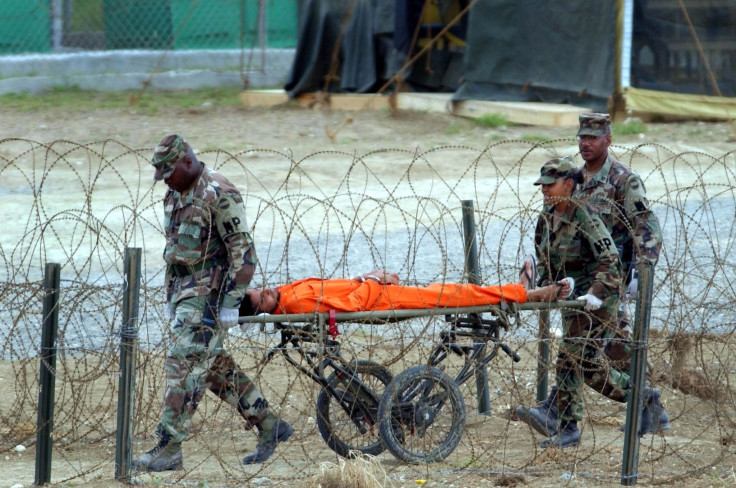Torture Report Declassified 2014: CIA Methods Hindered Global Fight Against Abuse For Years

Years of U.S. abuses could inspire other countries to treat prisoners harshly and hinder international efforts to eradicate torture worldwide, human rights activists warn. The U.N.'s Special Rappateur on torture said Thursday that the conduct outlined in the Senate Intelligence Committee report on Bush-era abuses at the CIA “has made it easier for other nations to shirk their responsibilities,” and embrace global human rights protocol.
“I travel to parts of the world in my capacity of United Nations special rapporteur on torture,” he said, “and I can attest to the fact that many states either implicitly or explicitly tell you: ‘Why look at us? If the U.S. tortures, why can’t we do it?’”
The exhaustive Senate Intelligence Committee Report found evidence of CIA operators stripping detainees naked, dragging them around dirty floors and threatening them with death. It's release Tuesday sparked new debate over the limit of counter-terrorism efforts and prompted calls for high-level officials, including former President George W. Bush and Vice President Dick Cheney to be prosecuted for war crimes. Amnesty International called out Wednesday Uzbekistan, Thailand, Bahrain, Gambia Azerbaijan and the U.S. for failing to allow U.N. inspectors to have access to their detention centers.
“Everything [Mendez] said is something that I have said and that others engaged on international human rights over the last 11 or 12 years has said since information about these abuses first surfaced,” said Felice Gaer, director of the American Jewish Committee's Jacob Blaustein Institute for the Advancement of Human Rights and vice chairperson of the U.N.'s Committee Against Torture. “Since Abu Graib, Guantanamo and the like, the U.S. has made it very difficult for people like me who are fighting against torture and to implement international and national prohibition against torture to be effective.”
Gaer said she has had “something critical to say” about every one of the 110 countries she has reviewed at her time at the Committee Against Torture. Officials almost always ask “why are you being so tough on us and not on them?” when they are reviewed, whether they are referring to a contentious neighbor, the U.S. or an ally, as some sort of a justification for their own activity, she said.
The International Rehabilitation Council for Torture Victims in Denmark identifies 11 countries, including some that the U.S. works directly with in its global fight against terrorism, where state-sponsored torture still occurs or the state has failed to hold perpetrators accountable for past acts. Some states have gone as far as to condemn the contents of the Senate report while failing to answer for their own abuses. Pakistan’s Foreign Office spokesperson Tasnim Aslam slammed the CIA abuses Thursday, but the IRCT points to Pakistan as a primary perpetrator of torture and the Pakistani government has done little to criminalize and curb those abuses.
“I’ve been involved with [the Committee Against Torture] for about 15 years and have observed that the worst abuses are generally alleged to have taken place within the context of 'security,'” said Gaer. “It doesn’t matter if a country is a dictatorship or a democracy, we often have the toughest time getting info when we ask about security agencies. From that point of view, the amount of depth and transparency in this report is remarkable… other countries have a lot to come forward about and correct, the key thing is that measure be taken to reform and prohibit abuses worldwide.”
The Convention Against Torture is a UN treaty effective as of 1987 that establishes an understanding of what torture is and requires states who ratify it to takes steps to prevent torture in their jurisdictions. The U.S. and 156 other countries have signed on to the treaty.
The definition of torture in the treaty is broad, meaning “any act by which severe pain or suffering, whether physical or mental, is intentionally inflicted on a person for such purposes as obtaining from him or a third person information or a confession,” as well as for other reasons.
Many of the techniques used by the CIA have existed for decades and the U.S. often trained its anti-communist allies in the method, according to Alfred McCoy, author of two books on torture and a history professor at the University of Wisconsin-Madison. Some of those countries, like Argentina and Chile have made significant steps forward. The U.S. can serve as an example now, he said.
“We’re not only the leader of what we call the 'free world' but also the moral leader, there’s no question about that,” he said. “When we basically ignore the Convention Against Torture, not only does that diminish our leadership but also the aspiration for creating an international rule of law.”
He said that Mendez's assertion that American torture practices has “made the matter of terrorism worse” is hard to quantify. But he pointed out that the Islamic State group makes their hostages wear orange jumpsuits in their beheading videos as a reference to the orange jumpsuits worn by prisoners at Abu Graib and Guantanamo Bay detention centers, where a number of CIA abuses occurred.
© Copyright IBTimes 2025. All rights reserved.






















